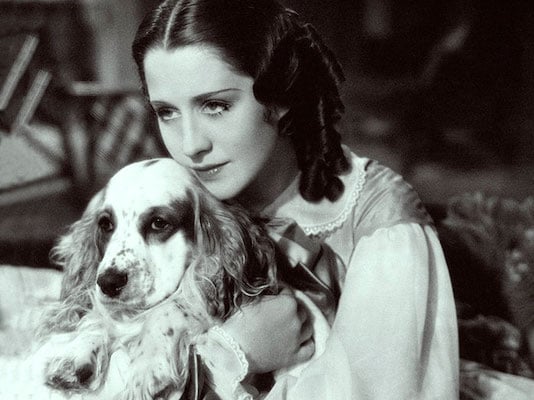Cocker Spaniels have long been a cherished part of England’s canine history.
Known for their buoyant spirit and graceful agility, these dogs have traversed a remarkable journey from adept hunters in medieval times to adored family members today.
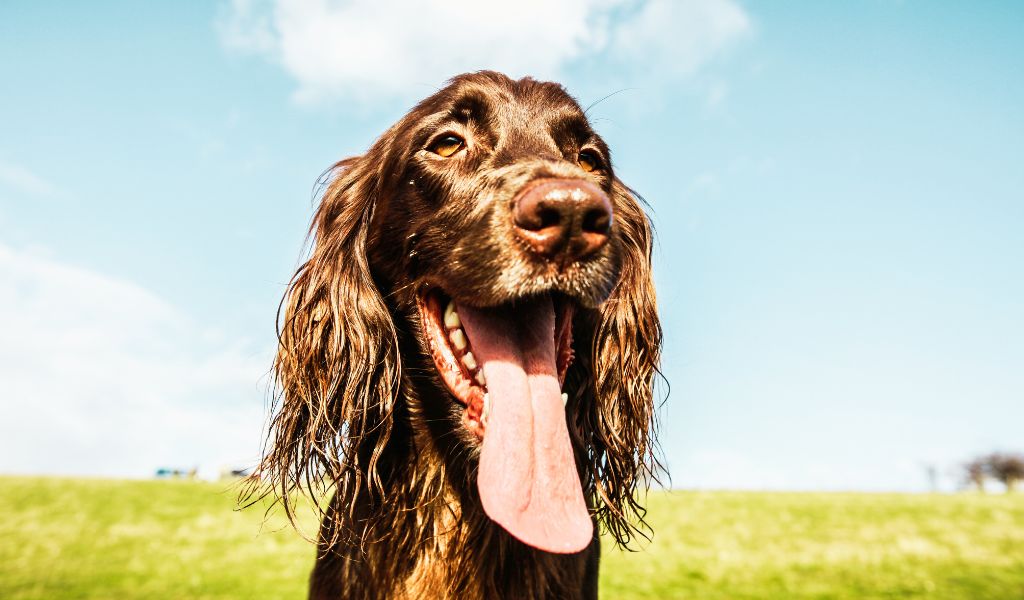
Key Takeaways
- The breed’s origins as skilled hunters in medieval England.
- Victorian era developments that led to breed distinction.
- Prominent portrayals in English art and literature.
- The influence of royal patronage on the breed’s popularity.
- Regional breeding variations and their implications.
- Contributions of Cocker Spaniels in both World Wars.
- Contemporary challenges and conservation efforts.
Spaniels in Medieval England: The Early Ancestors
In medieval England, Cocker Spaniels were primarily bred for hunting woodcocks, a skill that defined their name.
Historical records from this era, such as the ‘Laws of Cnut‘, provide evidence of their role in hunting and their esteemed status among nobility.
The Victorian Era: Breed Distinction and Popularity
The breed’s prominence surged in Victorian England.
Queen Victoria’s documented affection for the breed, along with the establishment of breed standards by The Kennel Club in the late 19th century, played pivotal roles in their rising popularity and distinct identity.
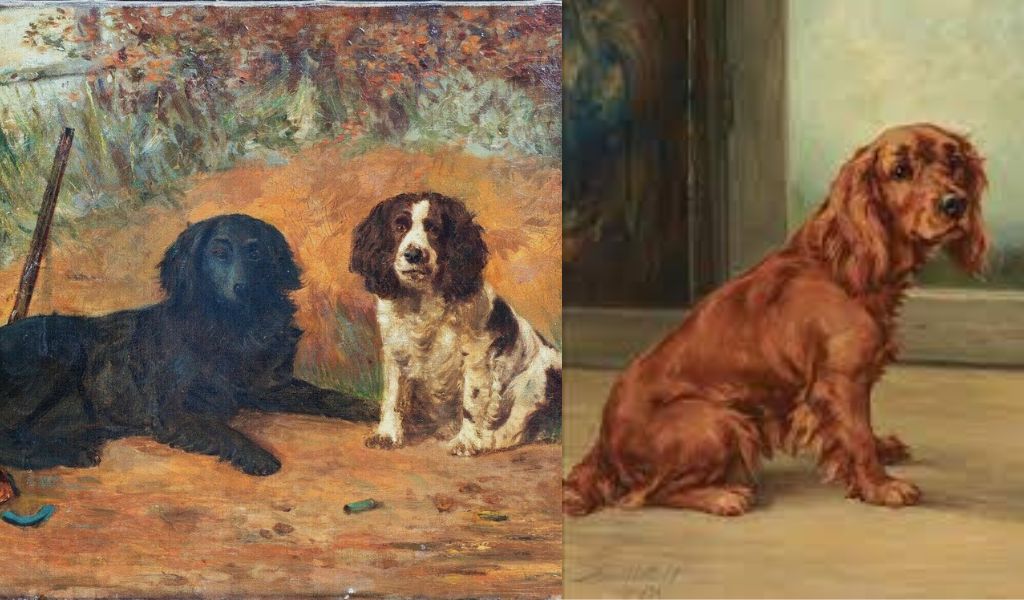
Icons of the Breed: Cocker Spaniels in English Art and Literature
Cocker Spaniels feature significantly in the works of artists like Sir Edwin Landseer and writers like Elizabeth Barrett Browning.
Their depiction in paintings and literature of the era often symbolized loyalty and domestic bliss, reflecting the breed’s temperament.
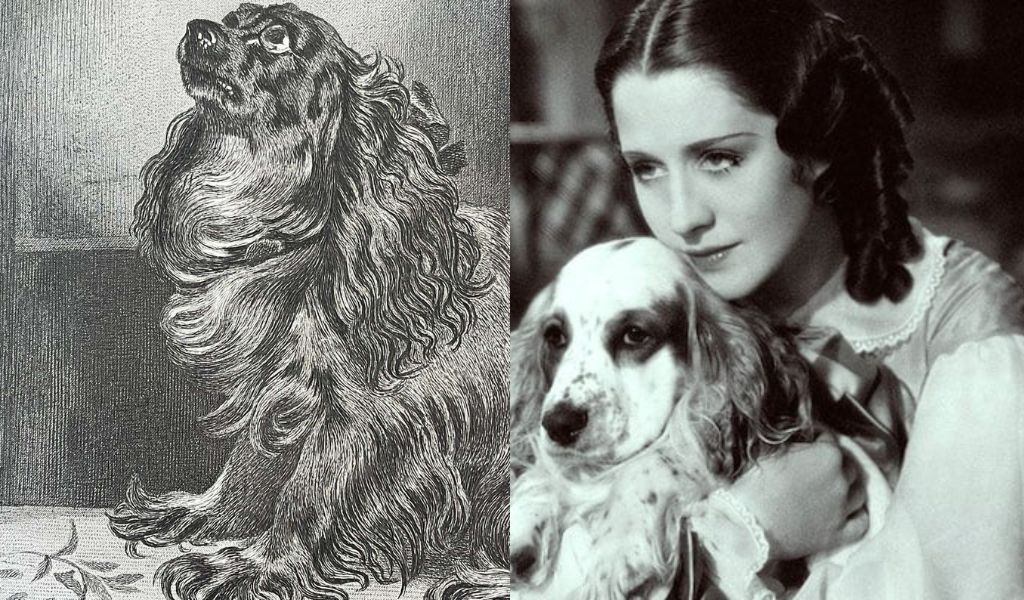
Kennel Club Recognition and Breed Standardisation
The Kennel Club’s recognition in 1873 marked a turning point for Cocker Spaniels.
It established breed standards, focusing on physical and temperament traits, which were crucial in defining and preserving the breed’s identity.
Royal Companions: Cocker Spaniels and the English Monarchy
Their association with the monarchy, especially during King Edward VII’s reign, enhanced their prestige.
This royal patronage, documented in royal portraits and public appearances, significantly influenced their popularity and status.
Differences Across the Land: Regional Variations in England
Distinct breeding practices across England led to regional variations in the breed.
For instance, Northern England breeders often favoured a sturdier build, suitable for the region’s rugged terrain, while Southern breeders preferred a more refined appearance.
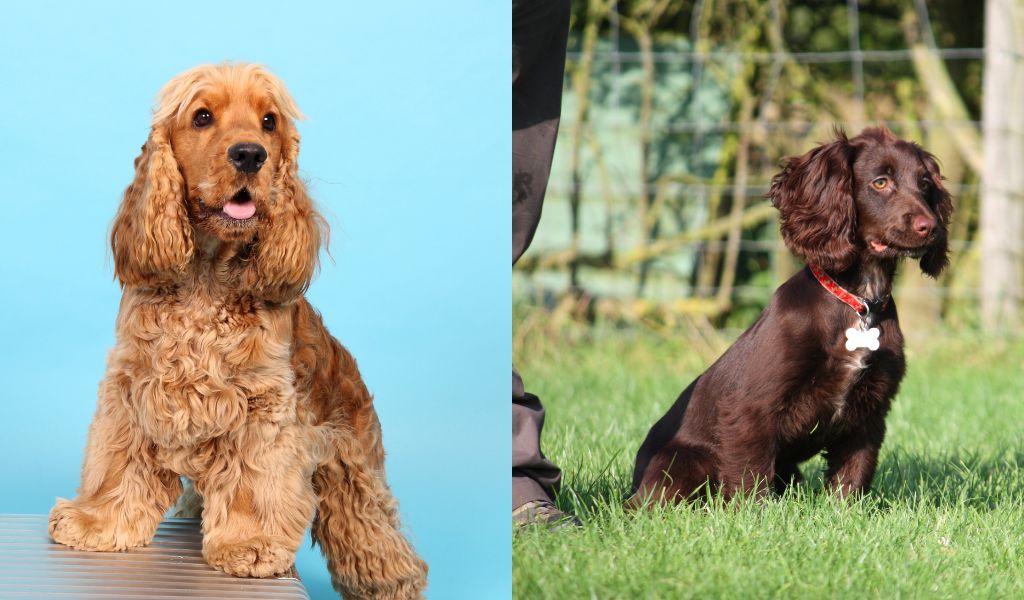
War Heroes: The Role of Cocker Spaniels in World Wars
During both World Wars, Cocker Spaniels served various roles, from message carriers to mascots.
Their participation in these wars is well-documented in military records, highlighting their versatility, intelligence, and bravery.
Modern Challenges: Health and Conservation
Today, the breed faces challenges such as genetic health issues like hip dysplasia and progressive retinal atrophy.
Breed clubs and enthusiasts are actively addressing these through health screenings, breeding practices, and awareness campaigns.
The Future of Cocker Spaniels in England
Ongoing efforts by breed clubs and enthusiasts indicate a promising future for Cocker Spaniels in England.
These include breeding programmes focused on health and temperament, ensuring the breed’s legacy continues.
FAQs About Cocker Spaniels in England
What was the primary role of Cocker Spaniels in medieval England?
They were esteemed for their ability to flush woodcocks, as indicated by historical hunting records.
How did the Victorian era influence the breed?
Queen Victoria’s fondness for the breed and The Kennel Club’s standardisation efforts led to its distinct identity and increased popularity.
Can you cite examples of Cocker Spaniels in English art and literature?
Sir Edwin Landseer’s paintings and Elizabeth Barrett Browning’s poetry prominently feature Cocker Spaniels, often as symbols of loyalty and domestic harmony.
What impact did royal patronage have on the breed?
Royal patronage, notably during King Edward VII’s reign, elevated the breed’s status, making them fashionable among the aristocracy.
What are the current health concerns for the breed?
Key health concerns include hereditary conditions like eye disorders and joint problems, being addressed through health screenings and responsible breeding practices.
What efforts are being made to ensure the breed’s future in England?
Breed clubs are focusing on health conservation, responsible breeding, and public education to preserve the breed’s unique qualities.
Conclusion
The history of Cocker Spaniels in England is a rich tapestry of evolution, cultural significance, and an enduring legacy.
Their journey from medieval hunting fields to the hearts of modern families illustrates their adaptability and the affection they inspire.

